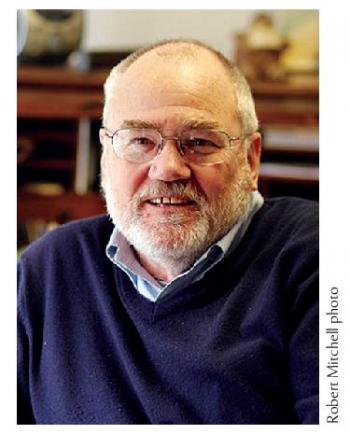The Virginia is born
On Saturday, a sailboat was launched from the shore just a few blocks north of Bath Iron Works, where the Navy’s destroyers are born.
As thousands held their breath and a quartet of buzzing drones watched from above, a pair of giant yellow cranes carefully lifted the 50-foot-long wooden sailing craft off a cradle and set her into the chilly waters of the mighty Kennebec.
Thousands cheered, and bands played as dozens of volunteers, many sporting lots of grey hair and fluffy white beards, beamed with pride. They did it. They really did.
In a state where coastal communities are known for building ships of all sizes, a persistent gang of volunteers, retirees and history buffs built a vessel commemorating the first ship built in Maine, some 415 years ago.
Her story began in 1607, 13 years before the Pilgrims landed at Plymouth Rock when a group of English settlers landed at the mouth of the Kennebec in a town now called Popham. They built a fort on the banks of an inlet known today as Atkins Bay.
To make a long story short, after spending the winter at one of the most inhospitable locations in the nation, irritating the locals to no end and failing to find riches, they built a boat named Virginia and sailed back home. Their Popham project soon was lost in the mists of history as Jamestown, Virginia became known as the first English settlement.
Some 30 years ago, Dr. Jeffrey P. Brain of Peabody Essex Museum in Salem, Massachusetts discovered evidence of, and a possible location of, the lost Popham settlement. Helped by a gang of volunteer archeologists, they found artifacts confirming his theory.
After celebrating their success at the nearby home of Jane Stevens, an amateur historian and author, who provided them with enthusiastic encouragement, and office space in her kitchen, they decided to build a replica of the Virginia. They hoped to launch her in 2007 to mark the 400th anniversary of the colony.
Orman Hines, a retired chef from Bowdoin College, is an archeology buff who worked on the dig. He is the longtime president of the group known as Maine’s First Ship.
Saturday afternoon, as he smiled as he watched the launching party crowd from a lawn chair on the porch of the old Bath riverside freight shed, he said that after the crew fits her out, they plan to sail her up and down the river to show fans and schoolchildren a history lesson they won’t forget. Hines said they hope to one day to even participate in Boothbay Harbor’s annual Windjammer Days celebration.
But it took a while to get the project off the ground.
Hines explained the project floundered around for a while as they begged for money and sold T-shirts and ball caps while the nation’s economy stalled. With help from volunteer historians, researchers and workers, including a boost from master shipwright Rob Stevens, no relation to Jane, they built a small sailing craft called a shallop, naming it after Jane.
“We couldn’t have done it without Rob,” said Hines. “He made it happen.”
Ed Rogers, a Bath restauranteur (J.R.Maxwell & Co.) who once owned eateries in Boothbay Harbor, stopped by to chat with Hines. He said he got involved with the project only if they promised to start building. They did, and Rogers helped by providing nourishment and other services to help convince potential donors and volunteers to join in the effort. But he was not alone.
They laid her keel in 2011, and for years, the volunteer shipbuilders made lots of sawdust as they learned and practiced the old trades needed to build an antique wooden ship. For example, they learned about trunnels, large wooden pegs used in place of metal nails to fasten the parts together.
On Saturday, their Virginia project came together.
The town threw a launching party celebrating the communities’ past and present involving bands, brass and string, along with costumed history buffs showing off muskets and swords as they checked their smartphones.
At 4:30 p.m., a fleet of pleasure boats watched Nelson Barter, costumed as a pirate, pull on his floppy hat and stride to the dock where he fired off a cannon.
As the cranes whirred, lifting the brightly painted hull into the air, the crowd quieted and held up cell phone cameras. Even the grade school-age boys climbing nearby trees stopped their banter.
When her keel hit the water, she started to slowly, ever so slowly, rock with the tide.
At that moment, the Virginia, conceived as a pipe dream by hopeful volunteers gathered around Jane Stevens’ kitchen table, became alive.


























